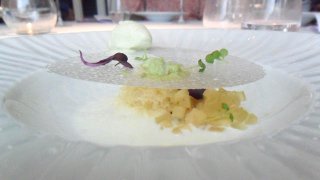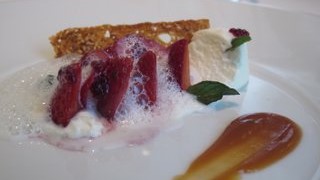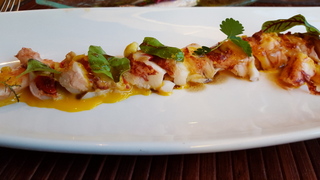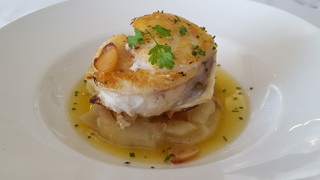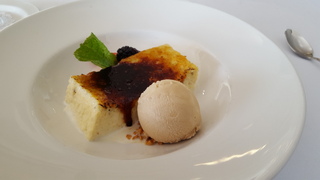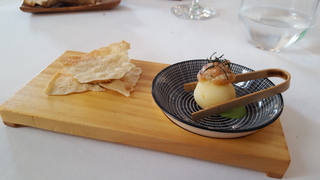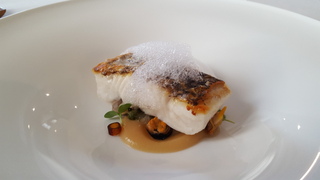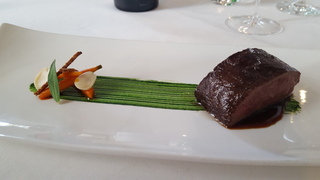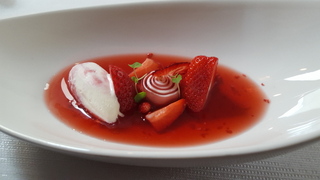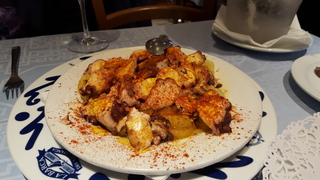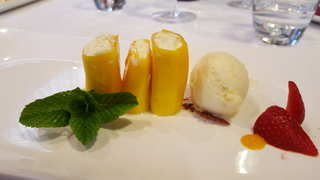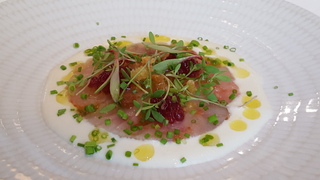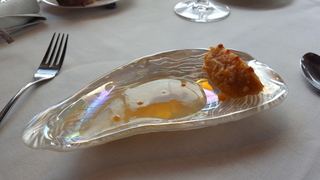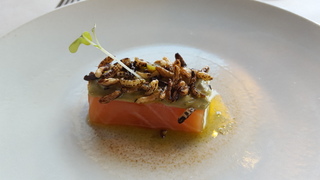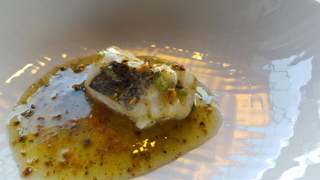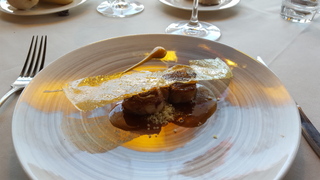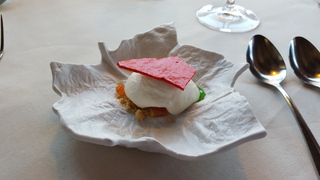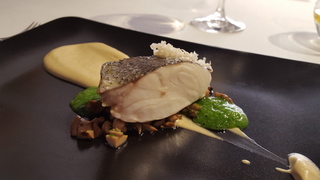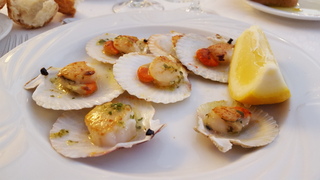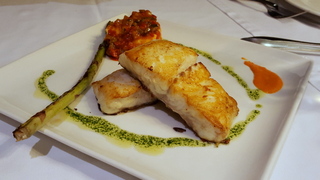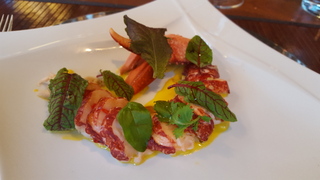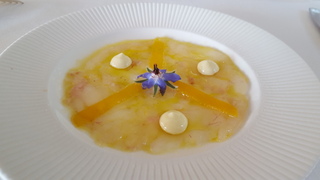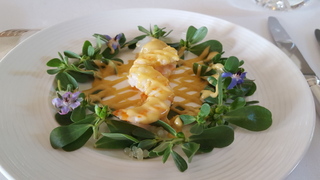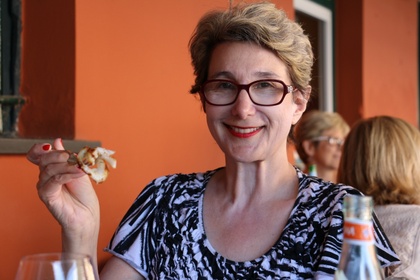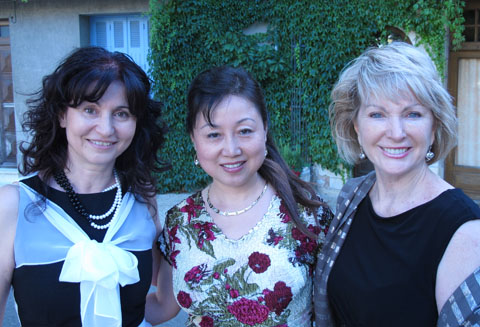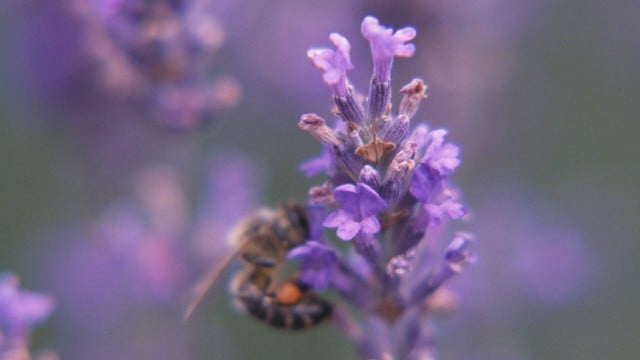
Newsletter - December 2019
Greetings from Robbi & Jim
A warm welcome to all of the members of our Aroma Tours Newsletter in over 30 countries around the world.
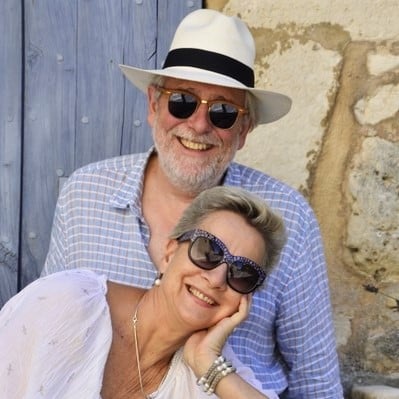
Robbi and I are greatly enjoying our time at home, catching up with friends and family after our very busy year of travel. We have also been reflecting on the myriad of delightful moments that we have shared with our guests this year and the many reasons that we have for being grateful.
We most sincerely wish you a wonderful, fun-filled festive season with your loved ones and friends and hope that next year will be filled with prosperity, peace and many joyful moments.
After 25 wonderful years, as we contemplate throttling back on the number of tours that we will be offering, Robbi and I feel truly blessed to once again be sharing our passion for the fabulous places and experiences that we love, with delightful people from around the world.
We are delighted to see that demand for next year's season is the strongest we have ever seen!
- For more details, prices and itineraries we invite you to visit our tour information page and if your would like to reserve your place this can be done via our make a reservation page.
Aroma Travellers Our Thanks
Without doubt, the main reason that we have grown and flourished over the years, is the on-going support we have received from our past Aroma Travellers and we are thrilled to see that they continue to make up almost 65% of our guests!



 |



 |



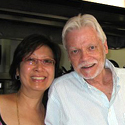 |



 |
We would also like to give our heart-felt thanks to all of you who continue to support us with your kind words and referrals.
Robbi and I also greatly appreciate the wonderful words of thanks we have received over the years and have added a new compilation of Guest Comments to our site.
Spanish Gourmet Tours
Each year our Aroma Tours adventures begin with our delightful and delicious Michellin star studded gourmet tours in northern Spain
The first bite is always with the eye and here for your visual feasting are some of the fabulous meals that we enjoyed during our Flavours of Spain Tour and Spanish Gourmet Pilgrimage
- How do they taste you ask? Absolutely divine!
There are still 2 vacancies available for both our Flavours of Spain Tour and Spanish Gourmet Pilgrimage and we would love to share a fabulous foodie adventure with you in amazing northern Spain.
- For more details please visit our tour information page and if you would like to share in this you can reserve your place via our make a reservation page
Our Current Booking Status
The enthusiasm for our 2020 season is continuing strongly with all of our tours now either sold out or down to the last few vacancies.
| List of Tours for 2020 | ||
| Flavours of Spain | 18 - 25 May 2020 | |
| Spanish Gourmet Pilgrimage | 25 May - 1 June 2020 | 2 vacancies |
| Flavours of France (invite only) | 8 - 15 June 2020 | SOLD OUT |
| Heart of Provence | 22 - 29 June 2020 | 1 vacancy |
| Essential Provence | 29 June - 6 July 2020 | 2 vacancies |
|
Treasures of Provence (ladies only special event) |
10 - 17 July 2020 | |
| Aromas of Tuscany | 1 - 8 September 2020 | 2 vacancies |
| Flavours of Italy | 8 - 15 September 2020 | 2 vacancies |
| Bali Women's Retreat | 5 - 12 September 2020 | 2 vacancies |
| Bali Women's Retreat | 14 - 21 September 2020 | |
- For detailed information about any of our tours please visit our tour information page and if you would like to join us please visit our make a reservation page.
- If you would like us to hold your place(s) for a few days so that you have time to comfortably make your other arrangements please let us know at jim@aroma-tours.com
- We have now implimented waiting lists for our sold out tours and as it is still quite a while until next year, we encourage you to join as there is still a good chance that a place will become available.
- It is our pleasure to assist you with any questions you may have and we invite you to get in touch with us at jim@aroma-tours.com
Please note
- Our up-to-the-minute booking status is available via our calendar page
Travelling Solo in a Group
As well as couples and friends travelling together, we are regularly joined by solo travellers - mostly women, who appreciate being able to journey with liked minded people from around the world, without the need to do all the planning and take on the daunting task of touring by themselves.
Joining one of our small group tours is easy and we have already made all of the arrangements on your behalf to ensure that you have a delightful, stress-free holiday with the focus on having fun.
Having a ready-made group of friends to travel with, and us to take wonderful care of you is the way to go!
- There is no extra charge for solo travellers who are willing to share a room with another same gender guest from our group.
We have carefully crafted off-the-beaten-path itineraries that are the perfect balance of structure, experiences, details and free time to enjoy in your own way.
There have been a significant number of guests over the years who and have joined us multiple times, some of whom have become dear friends.
- Mona Smith, pictured at the beginning of this snippet, holds the record for the most tours attended by a solo traveller - she has journeyed with us 10 times and this year will be her 11th!
- Susan Troxell from NYC is a close second and has joined us 9 times with a 10th coming next year.
Celebration of Flavour
In all of our journeys we love to share the joy of experiencing
the cuisine and gastronomic traditions of the regions we visit.
The tastes and aromas of fresh seasonal ingredients prepared with practiced skill, care and pride in preparation, combine in a
myriad of ways to bring us moments to savour.
It is a challenge to express the delectable moments we share but hopefully
your eyes will enjoy dining along with us.
To that end, we have compiled a series of photo pages of the lovely meals we enjoy during our adventures to tantalize your taste buds.
Robbi and I hope to share some of these delicious moments with you in the near future.
Truffles
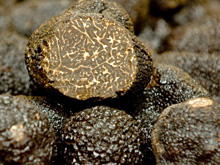
Most people have heard of the mysterious culinary delicacy known as the truffle; how it is rare, hard
to find, very expensive, grows on the roots of oak, hazel and holm trees, is
hunted with a pig or specially trained dog and is the cause of much skullduggery
in certain winter market places in the Perigord and Provence.
But what is a truffle?
Simply put it is the fruiting body of a fungus similar to the mushroom or toad
stool except that in the case of the truffle it does its fruiting underground.
Truffles require a moist, warm environment to allow the symbiotic relationship between the fungus ( which synthetizes minerals for the tree ) and the tree root ( which releases sugar to feed the truffle ) to occur. As a result, the success of each year's truffle harvest is subject to the vagaries of annual weather variations.
There are in fact more than a hundred different varieties of truffles growing in the wild but the vast majority only offer appeal to the creatures of the forest who enjoy eating them with gusto. For us sapien types however, there are only a few specific truffle varieties that appeal to our sense of taste ( and not all of us at that ).
The main ones are:-
Black Truffle - Tuber melanosporum
The Black truffle is renowned as the most flavoursome of all truffles and is the preferred variety used by most chefs. As a result of its strong flavour it can tolerate being heated briefly, usually in butter, before being added to enhance a dish's flavour. It has an earthy, minty, nutty flavor and is found in the Perigord, Provence, north eastern Spain and Italy from early December until early March and Australia from June to early September! It has a rough black exterior with intricate white internal veins.
White Truffle - Tuber magnatum pico
The Italian White Alba truffle is the most expensive variety of truffle with a smooth "felt-like" surface. Its rarity and delicate, perishable flavour are the reason it fetches the high prices it does. It has a strong cheesy-garlic aroma and is available after mid- September. It is very important not to heat this delicate treasure, rather it should be shaved directly into the finished dish - pasta is perfect as an example - just prior to serving.
Summer Truffle - Tuber aestivum
The Summer Truffle is found in abundance throughout Europe, most commonly in Italy and Provence. It has a rough black exterior but an interior quite pale compared to the black truffle. It has a mild taste, reminiscent of hazelnuts. The Summer Truffle is found between May and August, and has an immense amount of flavor for its price.
We enjoy them very much I can tell you during our Provence tours.
One of the best ways to enjoy truffles is to make an omelet with lovely fresh farm eggs and add slivers of fresh truffle - absolutely delicious!
Mistral - The Man and the Wind
Frederick Mistral (
1830 - 1914 ) was born in the tiny village of Maillane in the Bouches du Rhone
region of southern France
and after a lacklustre early education, he took it upon himself as a young man
to champion the independence of Provence, and in particular to restore the first
literary language of civilized Europe: the "Langue d'Oc" also known as
Occitan or Provencal.
Mistral resolved: "to raise, revive in Provence the feeling of race ...; to move
this rebirth by the restoration of the natural and historical language of the
country ...; to restore the fashion to Provence by the breath and flame of
divine poetry".
As a consequence of this great work over a lifetime, Mistral was awarded the Nobel Prize for
literature in 1904.
During his career he redefined the language in its purest form by creating a comprehensive Occitan-French dictionary and transcribing the songs of the medieval troubadours, who spoke the language in its original form.
Mistral's most important work is
an epic twelve part poem Mireille ( Mireio in Provencal ), published in 1859,
which tells the story of the thwarted love of Vincent and Mireille, two young
Provencal people of different social means.
Mireille's parents wish her to marry a rich landowner,
but her heart already belongs to Vincent who is but a lowly basket maker.
Sad and desperate, Mireille runs off to Saintes Maries de la Mer
at the mouth of the Rhone river and a place of pilgrimage, to pray to the patrons of Provence to change her parents' minds
but tragically, she falls victim to the heat, dying in Vincent's arms
under the gaze of her parents.
Mireio was a literary triumph and as a result it was translated into fifteen European languages and in 1863, French composer Charles Gounod made it into the opera, Mireille.
Mistral wrote short stories and also had an aperitif named after him
Frederick Mistral became much beloved in Provence for giving literary credibility to the Provencale language and perhaps this resulted in his name being associated with the fierce, cold northerly winds that are typical of Provence or maybe it was just a coincidence, given that Mistral ( Mistrau in Provencale ) means masterly and when Le Mistral blows it certainly masters all before it.
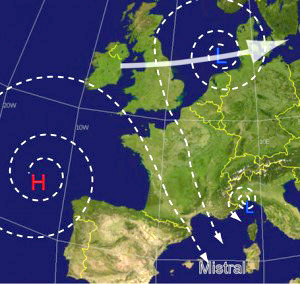 Le Mistral
is a cold, mostly dry, regional wind that can reach speeds of more than one
hundred kilometres an hour which occurs each time there is an area
of high pressure in the Bay of Biscay accompanied by an area of low pressure
around the Gulf of Genoa.
Le Mistral
is a cold, mostly dry, regional wind that can reach speeds of more than one
hundred kilometres an hour which occurs each time there is an area
of high pressure in the Bay of Biscay accompanied by an area of low pressure
around the Gulf of Genoa.
It occurs mainly during winter and early spring, streaming in from the north
or north west, accelerating as it passes through
the southern Rhone valley between the Ardeche and the low
Alps, before heading out into the Mediterranean to influence the weather in
North Africa, Sicily, and across the region.
Le Mistral helps explain the unusually sunny climate ( more than 200 days of sunshine a year ) and clarity of the air in Provence. Other parts of France can have cloud and storms, but Provence is rarely affected for long. Le Mistral quickly clears the sky; in less than two hours, the weather can go from overcast to completely clear!
Le Mistral also blows away dust and haziness making the air crystal clear, so that it is possible to see distant mountains over 100 kilometres away. It was this clarity of air and light that attracted many French impressionist and post-impressionist artists to the South of France and that gives us that glorious azure that we enjoy during our time in Provence.
- "Behind the Mistral is the beauty of Provence. Its fierceness blows away
clouds and grime and doubt, leaving colours the depth of dreams and a
freshness that can come only after the Mistral's scouring. Provence needs
the Mistral or it ceases to be the Provence of my dreams. I need the Mistral
to cut through those dreams to truth - beauty comes after the wind." ~ Kamiah
A. Walker
Our Invitation
Robbi and I look forward to welcoming you to one of our delightful tours or retreats as we continue moving towards our retirement in the next few years.
- For detailed information about any of our tours please visit our tour information page and if you would like to join us please visit our make a reservation page.
- As always if you have any questions or if you would like us to assist you personally with advice about your travel arrangements or with any other details please contact us at info@aroma-tours.com
Warmest regards,
Jim and Robbi
